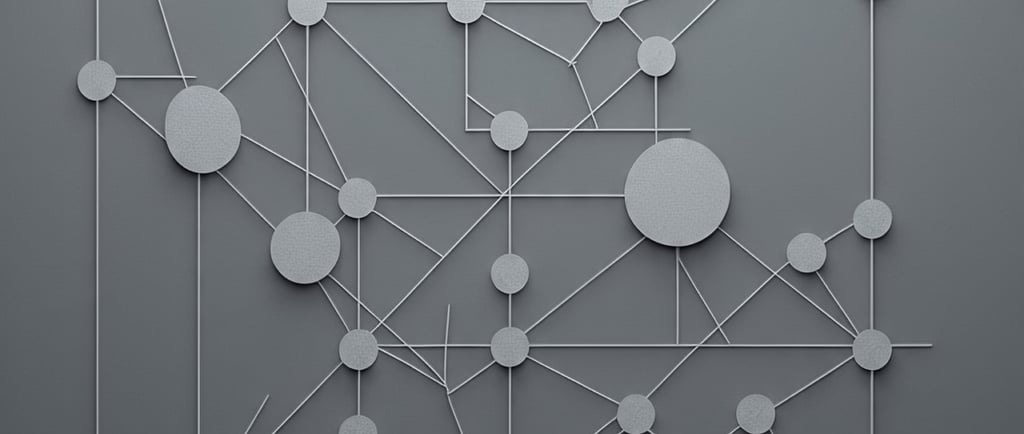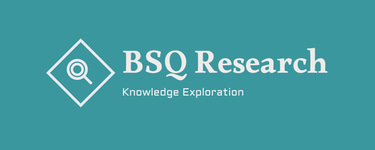Applications of Graph Laplacians
A mathematical bridge between networks and machine learning
NETWORK SCIENCE
7/9/20255 min read


Applications of Graph Laplacians
In the world of data science and machine learning, few mathematical concepts are as elegant and powerful as the graph Laplacian. This deceptively simple matrix lies at the heart of numerous algorithms, from spectral clustering to graph neural networks, serving as a bridge between discrete graph structures and continuous mathematical analysis. Understanding graph Laplacians opens doors to sophisticated techniques for analyzing networks, processing signals on graphs, and uncovering hidden patterns in complex data.
What is a Graph Laplacian?
At its core, a graph Laplacian is a matrix representation that captures the structure of a graph in a mathematically tractable form. For a simple undirected graph G with vertices V and edges E, the Laplacian matrix L is defined as:
L = D - A
Where:
D is the degree matrix (a diagonal matrix containing each vertex's degree)
A is the adjacency matrix (indicating which vertices are connected)
This definition is super simple, but it describes something quite deep: it's the discrete analogue to the Laplacian operator on multivariate continuous functions. The graph Laplacian captures the same fundamental concept as the continuous Laplacian—measuring how much a function varies from its local average.
The Laplacian tells us how much the steepness is changing. It's the analogue to the second derivative for a continuous, single-variate function!
Key Properties and Mathematical Insights
The graph Laplacian possesses several remarkable properties that make it invaluable for analysis:
Spectral Properties
Because it is real and symmetric, its eigen values are real and its eigen vectors are orthogonal. These eigenvalues and eigenvectors, collectively known as the spectrum, reveal fundamental information about the graph's structure.
Connected Components
The number of zero eigen values of Laplacian is equal to the number of connected components in the graph. This property provides an immediate way to determine graph connectivity through linear algebra.
Smoothness and Similarity
Two similar data points with high edge weight will have similar values at their corresponding indices in the resulting eigen vectors. This smoothness property is crucial for many machine learning applications.
Applications in Machine Learning
Spectral Clustering
One of the most prominent applications of graph Laplacians is in spectral clustering. We began with features of data, constructing its Graph and Laplacian and using its spectral embeddings (eigen vectors), we found optimal partitions to obtain clusters.
The process works by:
Constructing a similarity graph from data points
Computing the graph Laplacian
Finding the eigenvectors corresponding to the smallest eigenvalues
Using these eigenvectors as coordinates for clustering
Spectral clustering is a popular technique that uses the Graph Laplacian for clustering. It works by computing the eigenvectors of the Graph Laplacian and then applying a clustering algorithm, such as k-means, to the resulting embedding.
Applications include:
Image segmentation: Dividing images into meaningful regions
Social network analysis: Identifying communities within networks
Gene expression analysis: Clustering genes with similar expression profiles
Semi-Supervised Learning
Graph Laplacians excel in semi-supervised learning scenarios where we have limited labeled data. Think of a social network where nodes are people and edges show how they're connected. Let's say we're trying to figure out which users are into sports and which ones are into media. Here's where it gets interesting; we only know this information for some users (that's what makes it "semi-supervised" learning).
The key insight is Laplacian smoothing: We have a basic rule of thumb that says "If a group of nodes are connected, they are often, but not always, similar in characteristics." This enables label propagation across the graph structure.
Dimensionality Reduction and Embeddings
The spectral decomposition of the Laplacian matrix allows the construction of low-dimensional embeddings that appear in many machine learning applications and determines a spectral layout in graph drawing.
The eigenvectors of the Laplacian provide natural coordinates for embedding graph vertices in low-dimensional spaces while preserving important structural relationships.
Graph Signal Processing
Graph-based signal processing is based on the graph Fourier transform that extends the traditional discrete Fourier transform by substituting the standard basis of complex sinusoids for eigenvectors of the Laplacian matrix of a graph corresponding to the signal.
This framework enables:
Signal filtering on irregular graph domains
Denoising of graph signals
Compression of data residing on graphs
Analysis of signals with non-Euclidean structure
Modern Applications in Deep Learning
Graph Neural Networks
Graph Laplacians have found new life in graph neural networks (GNNs). The Graph Laplacian has been used in deep learning and graph neural networks to improve the performance of various tasks, including node classification and graph classification. The Graph Laplacian can be used to define a graph convolutional layer, which can be used to learn node representations that are aware of the graph structure.
Quantum Machine Learning
Recent advances have extended graph Laplacians into quantum computing. The Laplacian learning method has proven effective in classical graph-based semi-supervised learning, yet its quantum counterpart remains underexplored. Researchers are developing quantum graph neural networks that leverage Laplacian-based methods for quantum semi-supervised learning.
Reinforcement Learning
The smallest eigenvectors of the graph Laplacian are well-known to provide a succinct representation of the geometry of a weighted graph. In reinforcement learning (RL), where the weighted graph may be interpreted as the state transition process induced by a behavior policy acting on the environment, approximating the eigenvectors of the Laplacian provides a promising approach to state representation learning.
This enables more efficient exploration and better generalization in RL tasks by learning meaningful state representations.
Computational Considerations
While powerful, computing graph Laplacians and their eigendecompositions can be computationally expensive for large graphs. existing methods for performing this approximation are ill-suited in general RL settings for two main reasons: First, they are computationally expensive, often requiring operations on large matrices.
Recent research focuses on:
Efficient approximation algorithms for large-scale graphs
Sparse matrix techniques for handling massive networks
Randomized methods for eigenvalue computation
Incremental updates for dynamic graphs
Variants and Extensions
Normalized Laplacians
For better numerical properties and to handle graphs with varying vertex degrees, normalized Laplacians are often preferred. A vertex with a large degree, also called a heavy node, results in a large diagonal entry in the Laplacian matrix dominating the matrix properties. Normalization is aimed to make the influence of such vertices more equal to that of other vertices, by dividing the entries of the Laplacian matrix by the vertex degrees.
Weighted Graphs
Common in applications graphs with weighted edges are conveniently defined by their adjacency matrices where values of the entries are numeric and no longer limited to zeros and ones. In spectral clustering and graph-based signal processing, where graph vertices represent data points, the edge weights can be computed, e.g., as inversely proportional to the distances between pairs of data points.
Practical Implementation
When implementing graph Laplacian methods, consider:
Graph Construction: Choose appropriate similarity measures and neighborhood definitions
Normalization: Select between unnormalized, symmetric, or random-walk normalized Laplacians
Eigenvalue Problems: Use efficient solvers for large sparse matrices
Parameter Selection: Tune the number of eigenvectors and clustering parameters
Future Directions
Graph Laplacians continue to evolve with new applications emerging in:
Geometric deep learning for non-Euclidean data
Graph generation and synthesis
Multi-layer and temporal networks
Federated learning on graph-structured data
Explainable AI through spectral analysis
Conclusion
Graph Laplacians represent a remarkable convergence of linear algebra, graph theory, and machine learning. Their ability to encode complex relational structures in mathematically tractable forms has made them indispensable tools across numerous domains. From uncovering communities in social networks to enabling breakthroughs in graph neural networks, the graph Laplacian continues to bridge the gap between discrete combinatorial structures and continuous analytical methods.
As data becomes increasingly interconnected and complex, understanding and leveraging graph Laplacians becomes ever more crucial for data scientists, machine learning practitioners, and researchers seeking to extract meaningful insights from networked data. The elegant mathematics behind these matrices continues to inspire new algorithms and applications, ensuring their relevance in the evolving landscape of data science and artificial intelligence.
BSQ Research
Transforming businesses with cutting-edge AI research
© 2025. All rights reserved.
